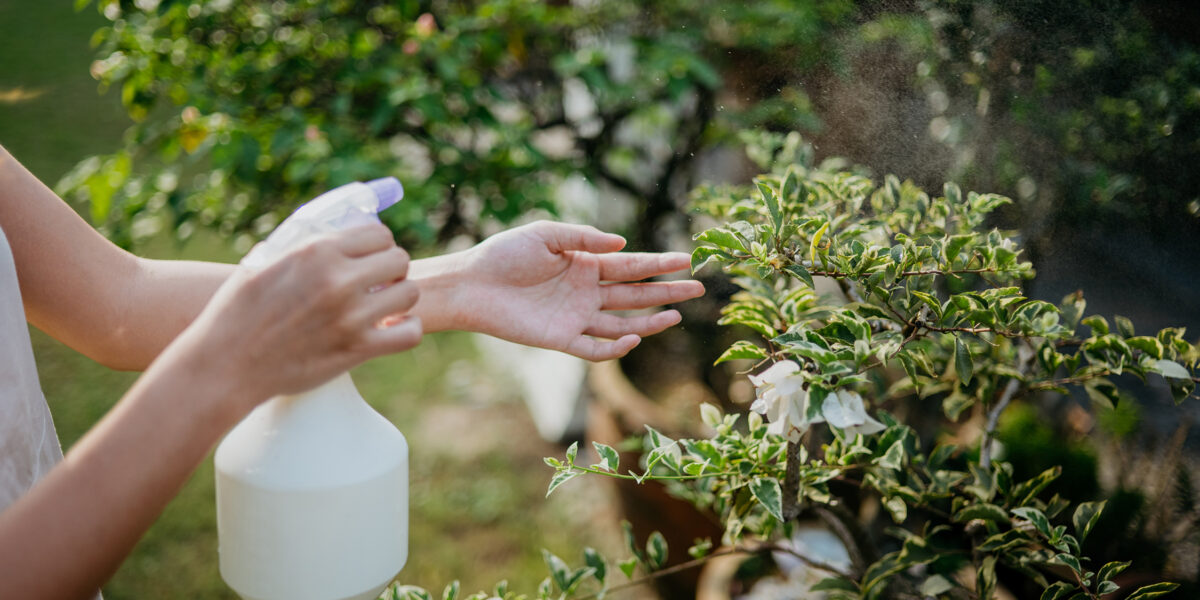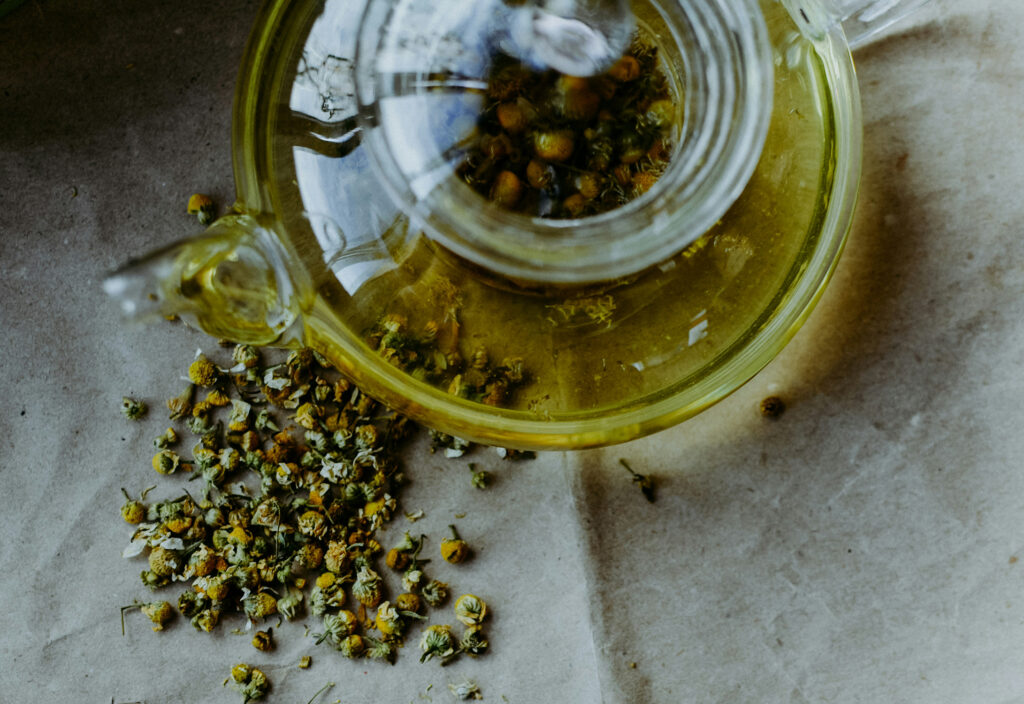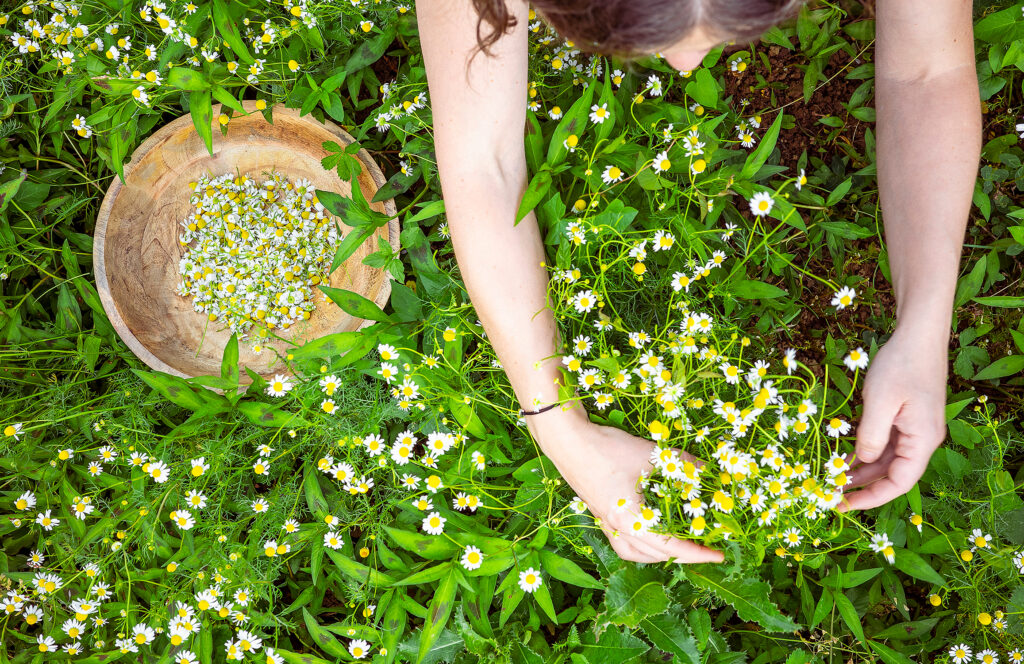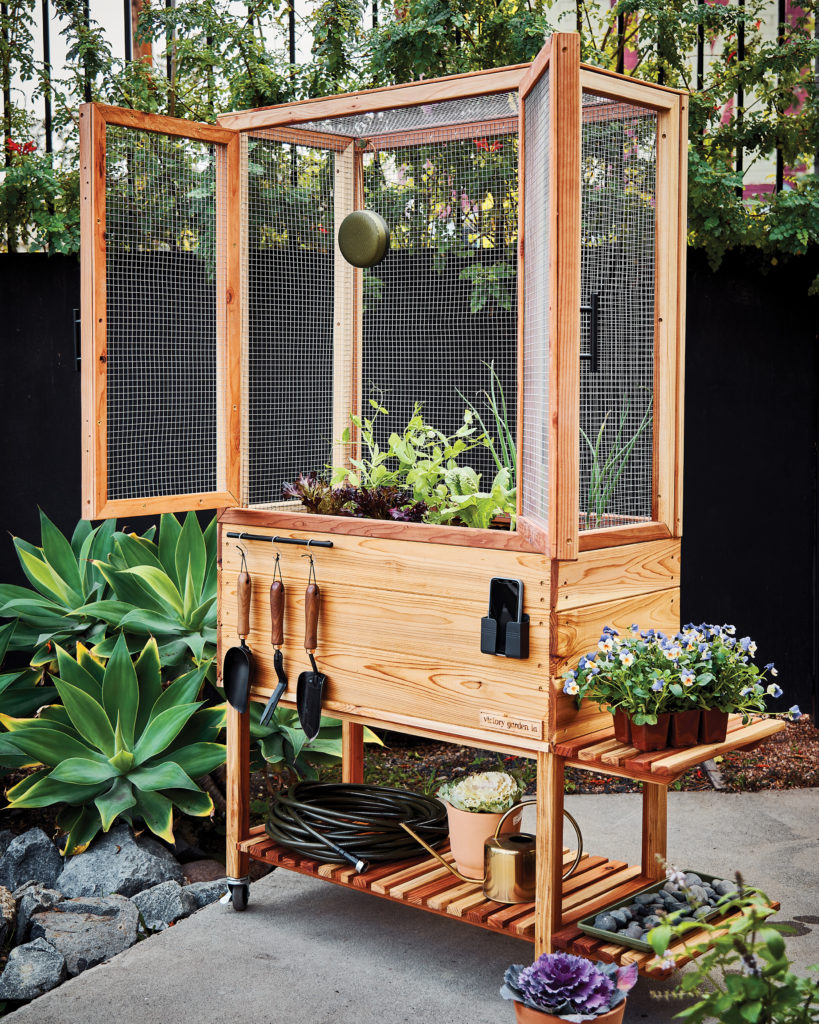
This Common Pantry Staple Will Save Your Spring Garden
Your evening tea just might save you some headaches—here’s how to use it.

It’s the start of seedlings and transplant season in most of our gardens, and with every new plant comes hope, excitement… and inevitably some hiccups. Learning to grow, well anything, is a constant state of learning and experimentation—gardens keep us humble, ya’ll! This spring, I refuse for your baby plants to go into their new homes without being set up for success… and we’re heading to your pantry for supplies.
Fungus, mold, and overworked soil in need of revitalizing are all obstacles gardeners face when ramping up the spring garden season. Recent cold, damp weather is a breeding ground for disaster and we’re brewing up a solution that can save your seedlings in a pinch. You heard that right, we’re making chamomile tea. Not just a remedy for your own wellbeing, this pantry staple can also prevent damping off when transplanting young plants, in addition to removing mold from leaves and aiding in seed germination. So fire up the kettle—it’s tea time in the garden.

Irene Ivantsova/Unsplash
Not-So-Basic Brew
There are a few ways you can apply chamomile tea to your garden and indoor plants. One of the most effective ways is by simply brewing up a batch of concentrated tea and allowing it to cool completely before applying to any leaves or soil. As a basic recipe rule, use one heaping tablespoon of either dried or fresh chamomile flowers per cup of water. Allow to steep for at least five minutes and as long as overnight. Higher concentrated mixtures can be diluted for future use or used full strength for pest control.
When it comes to nursing your newly sprouted seeds, add tea to a spray bottle and mist seedlings as soon as they sprout, continuing until they develop their second set of leaves. If you’re soil blocking or using nursery flats for germination, you can also pour chamomile tea into the tray liner and underwater from below—a technique that already has benefits for developing deeper and stronger root systems.
Chamomile tea isn’t just for sprouting seedlings either; it’s beneficial for potted and container gardens as well. You can either substitute weekly watering occasionally with this tea mixture or if you’re looking for a low-key lift, just add brewed tea bags directly on the roots of both indoor and outdoor plants to prevent fungus and add tannic acid to your garden soil.

Sanjeri/Getty Images
Botanical Benefits
Have you ever waited patiently for your seedlings to sprout, to only for them to emerge growing less than ideal, thin, thread-like stems and wilting leaves, ultimately producing fluffy, white cobweb-like growth? Overwatering, cool conditions, improperly sterilized containers or even starting seeds too early can all play a part in “damping off.” This plant disease doesn’t have to be the demise of your plants—by simply spraying young seedlings with cold chamomile tea, you can fend off fungus like a champ.
Looking for more generous germination? While soaking seeds is nothing new, try softening harder-coated seeds such as corn, beans, peas, or squash overnight for quicker, more successful growth. Once the seeds are sprouted, not only will this herbal spray literally melt away mold before your eyes, it will also have additional benefits for those plants with acidic soils, like rose bushes, azaleas, and rhododendrons. In addition to adding tannic acid, which lessens aluminum’s and other metals’ toxic effects on root growth, it can also free up nutrients such as calcium for crop use, which is needed for the building of strong cell walls in plants.
Once you’ve transplanted your seedlings, keep a bit of concentrated brew in a spray bottle on hand. Also known to be a successful natural insecticide, a quick spray of chamomile tea in early morning before the heat of day can help fight off mites and other flying insect pests while being safe for pollinators such as honeybees. For this more concentrated mix, it’s recommended to double or even triple the strength, so don’t be shy when steeping this bug-fighting brew.

Thomas J. Story
Grow Your Own
What’s better than using chamomile tea in the garden? Growing your own! Not only will you have a surplus of supply to dry and use for seasons to come, but chamomile is also an ideal companion plant for brassicas and basil alike! You can even try planting it around your fruit trees to prevent fungal infections with similar results to applying liquid tea. Similar to its brewed use as an insecticide, companion planting with chamomile can also repel mosquitos and fungus gnats while attracting other beneficial insects such as lady bugs and hoverflies.
Here’s to creating a healing habitat for both ourselves and our plants. We hope you’re inspired to add more tea into your cup and garden this spring!
